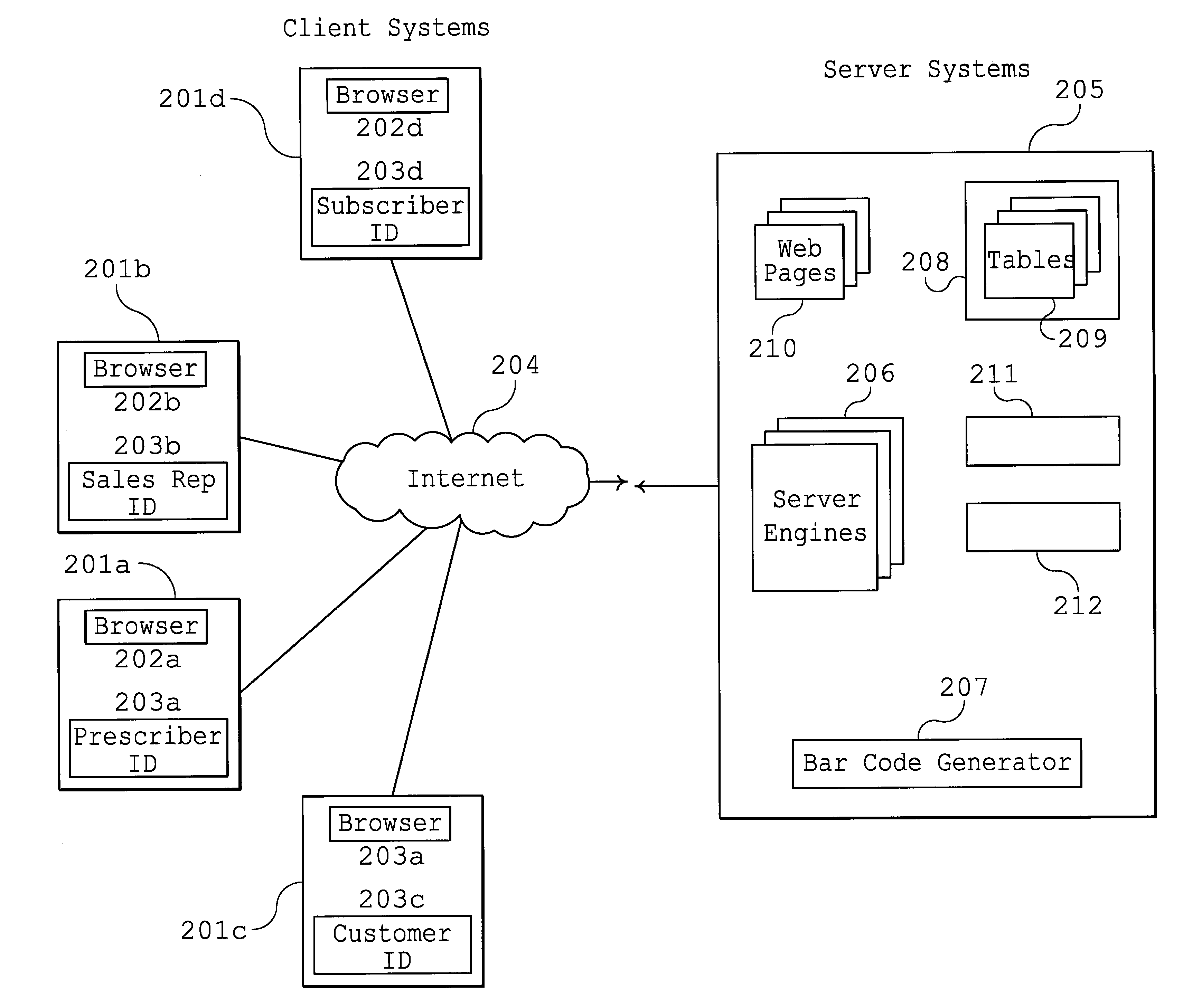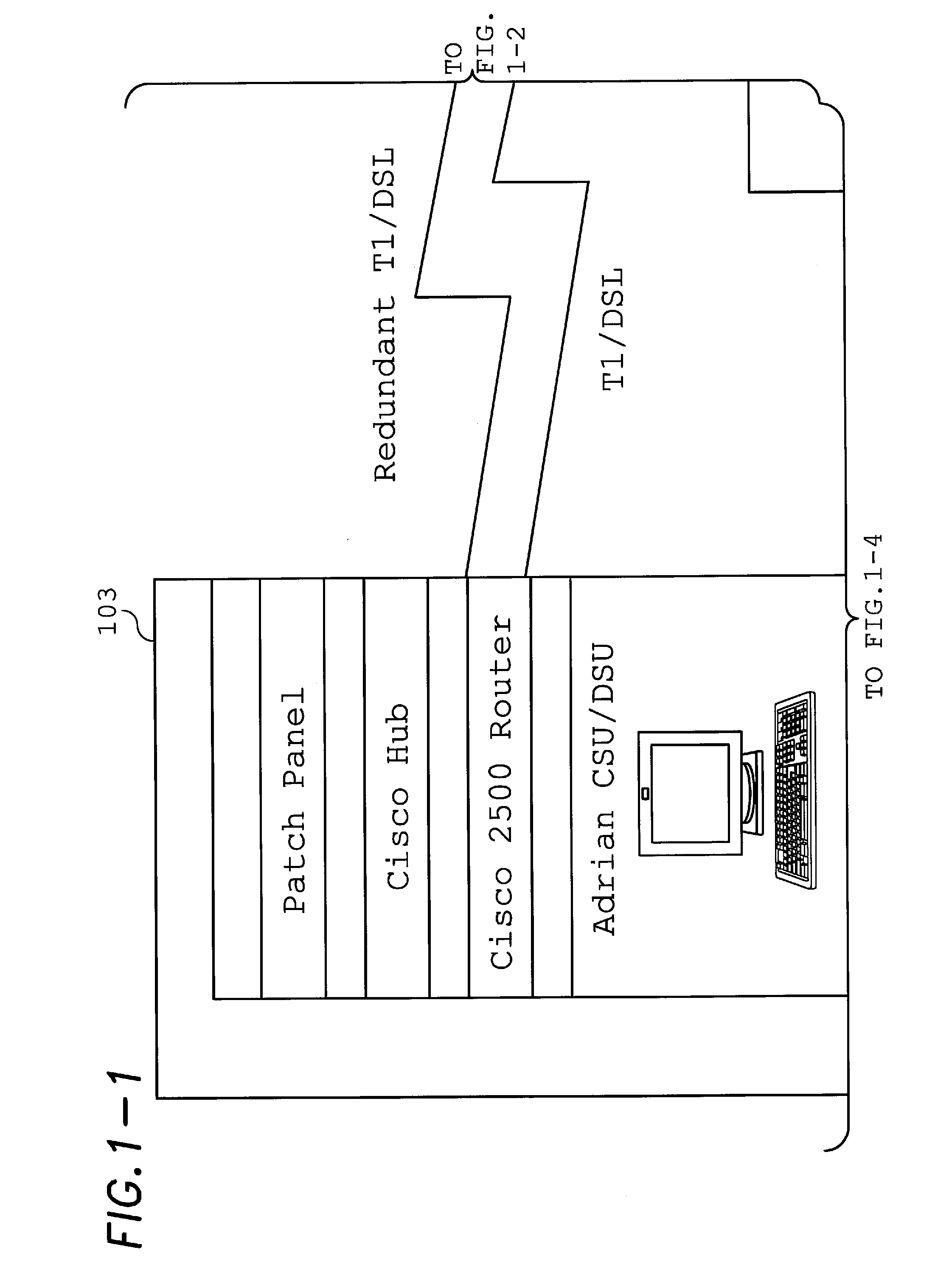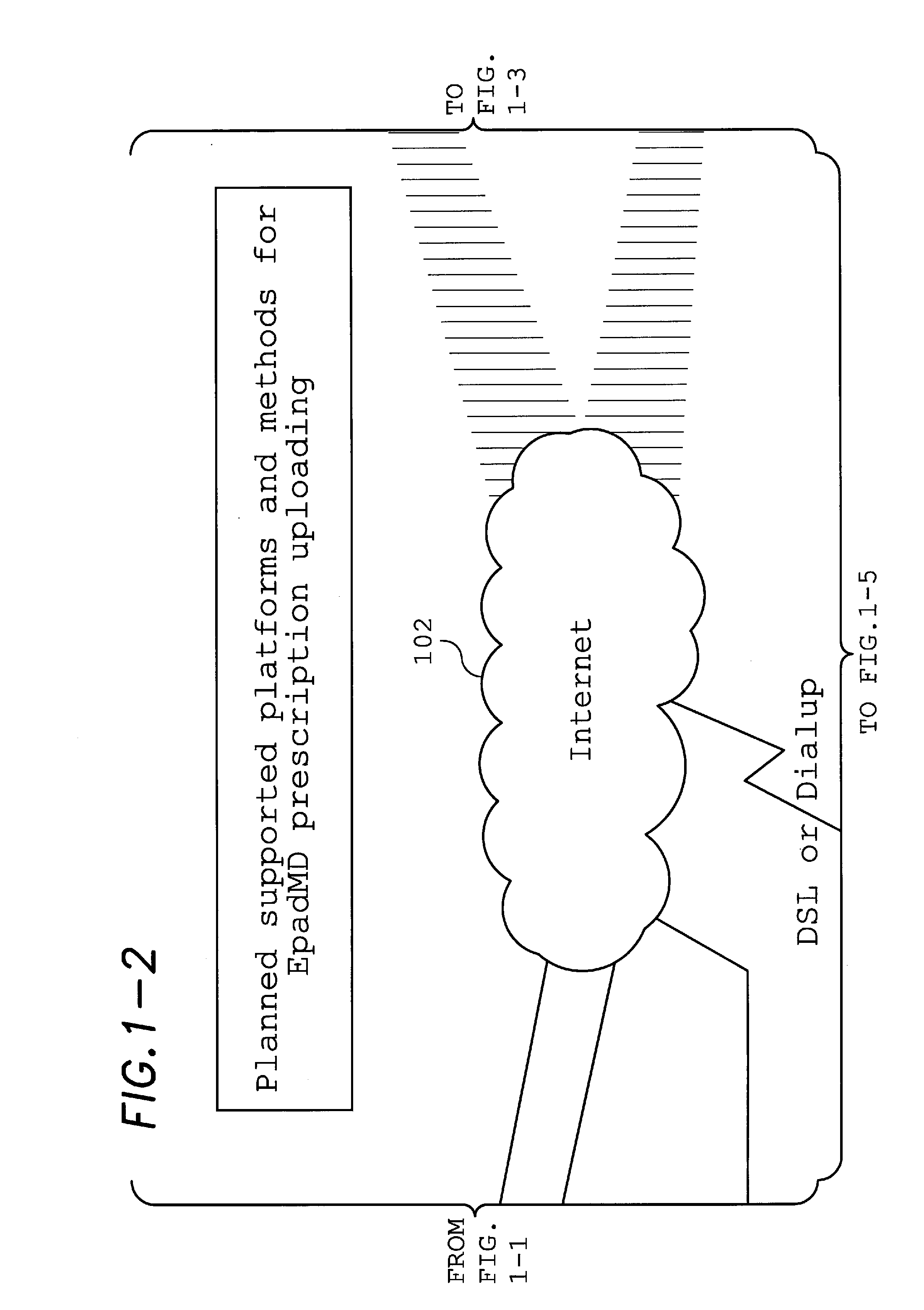Wireless electronic prescription scanning and management system
a management system and electronic technology, applied in the field of electronic prescription scanning and management system, can solve the problems of inaccurate medication given to patients, poor handwriting of physicians, and introduction of opportunity for error, so as to facilitate the ability of pharmaceutical sales representatives to accurately track the usage of medication samples
- Summary
- Abstract
- Description
- Claims
- Application Information
AI Technical Summary
Benefits of technology
Problems solved by technology
Method used
Image
Examples
Embodiment Construction
[0028]The development of small, hand-held computers, or personal digital assistants (PDAs) has offered an alternative to the use of traditional or notebook personal computers. Such devices are commonly used for tasks such as maintaining a calendar, list of addresses, and other personal information. In addition, they may contain application programs such as word processing programs, enabling users to perform a wide variety of tasks in a completely mobile manner, without the inconvenience of transporting a notebook computer. It is a common feature of such devices that they can upload information entered therein to applications within a user's personal computer, in a process referred to as “synchronizing” or “syncing”, thus enabling users to seamlessly integrate activities performed on mobile and traditional computer platforms. The synchronizing technology employed in the Palm line of devices is described in U.S. Pat. No. 6,000,000 to Hawkins, et al., entitled “Extendible Method and Ap...
PUM
 Login to View More
Login to View More Abstract
Description
Claims
Application Information
 Login to View More
Login to View More - R&D
- Intellectual Property
- Life Sciences
- Materials
- Tech Scout
- Unparalleled Data Quality
- Higher Quality Content
- 60% Fewer Hallucinations
Browse by: Latest US Patents, China's latest patents, Technical Efficacy Thesaurus, Application Domain, Technology Topic, Popular Technical Reports.
© 2025 PatSnap. All rights reserved.Legal|Privacy policy|Modern Slavery Act Transparency Statement|Sitemap|About US| Contact US: help@patsnap.com



